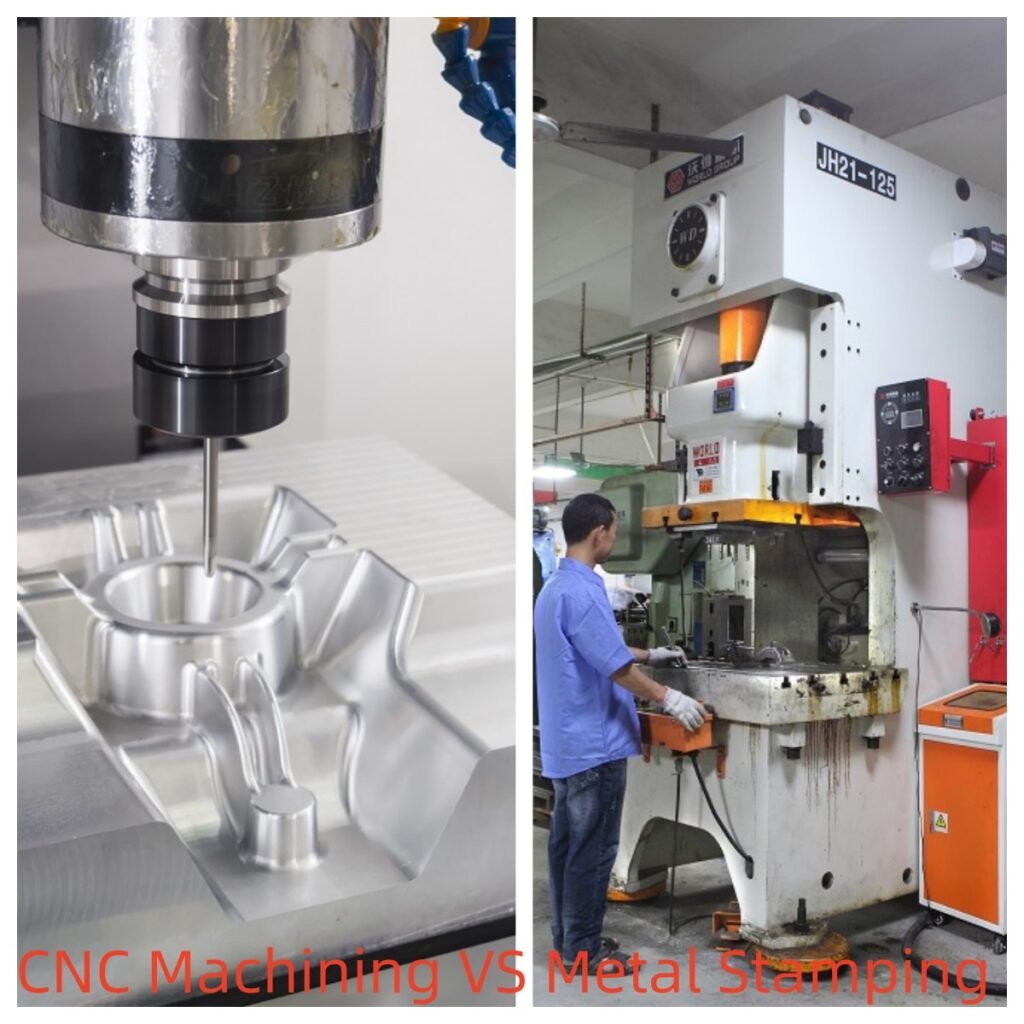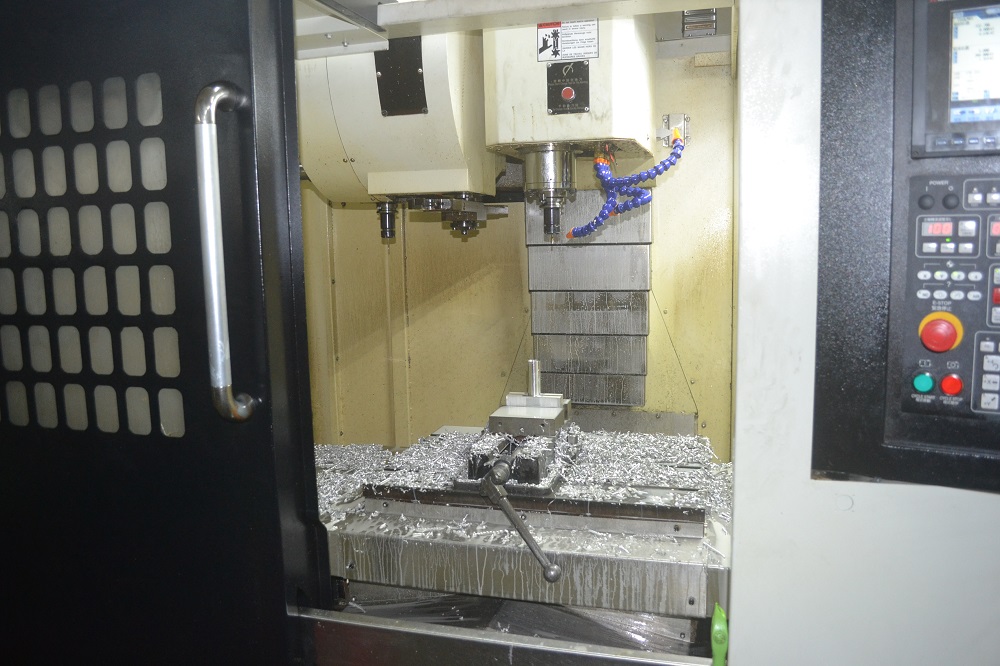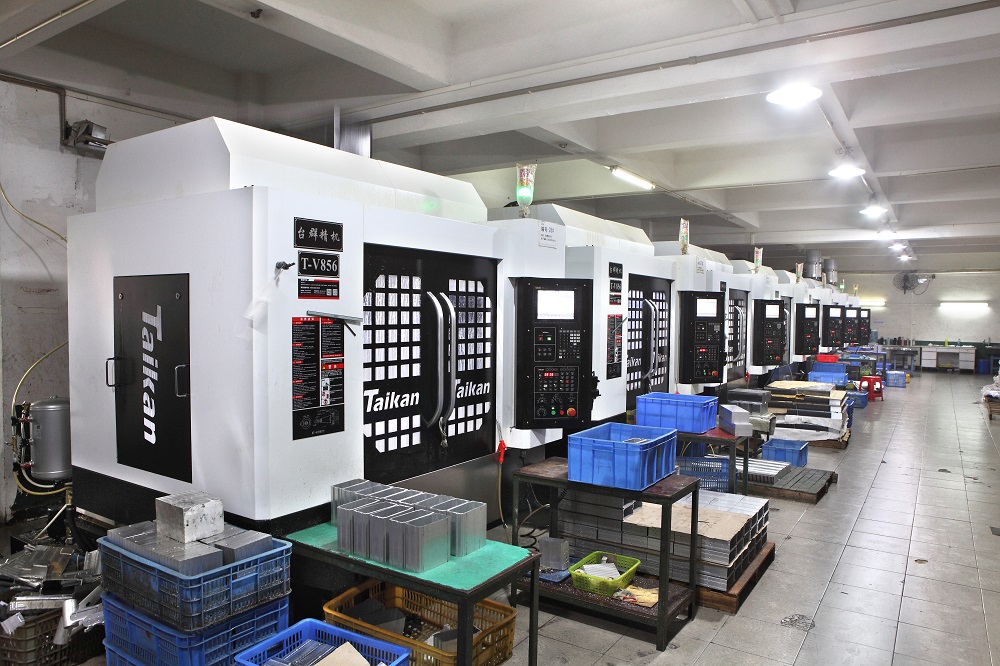In the world of manufacturing, understanding and choosing the right process for your specific needs can make the difference between success and failure. Two of the most popular manufacturing methods used today are metal stamping and CNC machining.
Both of these techniques offer unique advantages and have their respective applications, but choosing between the two can be a daunting task. That’s where this comprehensive guide comes in, aiming to assist you in making an informed decision when choosing between metal stamping and CNC machining for your project.

Understanding Metal Stamping and CNC Machining
A. What is Metal Stamping?
Metal stamping, also known as stamping manufacturing or part stamping, is a process that uses dies and stamping presses to shape and cut metal sheets into specific forms. It’s a method that has evolved over many years, and it’s now used in various sectors, including automotive, aerospace, medical, and electronics.
The metal stamping process involves several steps, including blanking, piercing, forming, and drawing, to create the final product. This method is particularly effective when dealing with high volume projects that require consistency and precision, such as creating stamped metal parts for automotive components or electronic devices.
B. What is CNC Machining?

CNC machining, on the other hand, refers to the use of computer numerical control (CNC) to automate the removal of material from a workpiece. This type of metal CNC process is extremely precise and can work with a wide variety of materials, including CNC metal, CNC steel, and even stamped aluminum.
CNC machining involves techniques such as drilling, milling, turning, and cutting to create the desired part or product. The CNC process offers significant flexibility, allowing for the production of intricate and detailed components, and it’s often the go-to choice for low to medium volume production runs. A CNC stamping machine, for instance, uses this technology to provide precision stamping on metal sheets.
Pros and Cons of Metal Stamping
A. Advantages of Metal Stamping

1. Cost-effectiveness
When dealing with high-volume production runs, the metal stamping process can be more cost-effective than other methods such as CNC machining or sheet metal milling. Once the initial tooling is completed, stamped metal manufacturing can produce a large number of components quickly and efficiently.
2. Efficiency for High-Volume Production
Metal stamping shines in its ability to rapidly produce parts in large quantities. After the initial setup, the stamping process can create thousands, or even millions, of identical parts, making it an excellent choice for mass production.
3. Versatility in Working with Different Metals
The stamping process can work with a wide variety of metals, including stamped aluminum, stamped steel, and other alloys. This versatility allows manufacturers to choose the most appropriate material for their specific application.
B. Disadvantages of Metal Stamping
1. Limitations in Design Complexity
While stamping metal process can create a broad range of shapes and designs, it can struggle with extremely complex or intricate designs. In such cases, other methods like CNC machining might be more suitable.
2. Initial Tooling Cost
The upfront costs associated with stamping manufacturing can be high, especially if custom dies need to be created for the process. However, these costs are often offset in the long run for high-volume projects.
Pros and Cons of CNC Machining
A. Advantages of CNC Machining
1. Precision and Consistency
CNC machining excels in creating highly precise and intricate parts. With its ability to follow complex programmed instructions, CNC machining can produce consistent and accurate components that meet tight tolerances, making it a reliable choice for industries such as aerospace and medical where precision is paramount.
2. Flexibility in Design and Prototyping
One of the most significant advantages of CNC machining is its unparalleled flexibility in terms of design. This process allows for changes to be made to the part design quickly and easily, making it perfect for prototyping. Unlike metal stamping, CNC machining doesn’t require special tooling for each new design, making design iterations quicker and more cost-effective in the early stages of a project.
3. Ability to Handle Complex Designs
When it comes to creating complex and detailed parts, CNC machining is often the superior choice. It can handle three-dimensional designs with ease, something that can be challenging for metal stamping.
B. Disadvantages of CNC Machining
1. Cost Considerations for Large Volume Production
While CNC machining is fantastic for low to medium volume runs and prototyping, it can become cost-prohibitive when used for large-volume production. The time it takes for CNC machining to create each part can add up, making metal stamping a more cost-effective option for large quantities.
2. Longer Production Times Compared to Metal Stamping
Even though CNC machining can create incredibly precise and complex parts, the process is generally slower than metal stamping. Each part is machined individually, which can lead to longer production times, especially for high-volume orders.
Factors to Consider when Choosing Between Metal Stamping and CNC Machining

1. Volume of Production
Metal stamping is often the preferred choice for high-volume production due to its ability to rapidly produce large quantities of parts. On the other hand, CNC machining is ideal for low-to-medium volume runs or prototyping, as it offers great design flexibility without the need for extensive tooling.
2. Design Complexity
When dealing with complex, intricate, or three-dimensional designs, CNC machining tends to be more effective. Its ability to cut in multiple axes allows for the creation of parts with complex geometries that metal stamping might not accommodate.
3. Budget Constraints
Cost is always a significant factor in any project. CNC machining, while offering greater flexibility and precision, may not be the most cost-effective method for high-volume manufacturing. Conversely, while metal stamping requires an initial investment in tooling, it becomes more cost-effective in larger runs due to its efficiency.
4. Material Considerations
The choice of manufacturing process can also depend on the type of material used. Some materials, such as stamped aluminum, are well-suited to metal stamping, while other materials might be better machined. For example, harder materials, like certain grades of steel, might be more suited to steel CNC machining.
5. Tolerance
If your project requires highly precise parts, CNC machining could be your best option due to its exceptional accuracy,it could make very tight tolerance, even to 0.001mm. However, metal stamping can also produce parts within tight tolerances, especially in high-volume production where consistency is key.
Metal Stamping vs CNC Machining: Which one is right for you?
At this stage, you might be asking: Should I opt for metal stamping or CNC machining for my project? Both have their advantages and limitations, and the right choice depends on several factors.
A. Opt for Metal Stamping when:
- You’re dealing with high-volume production. The efficiency and speed of the stamping process are advantageous for large production runs.
- You’re working with materials that lend themselves well to the stamping process, such as stamped aluminum or other relatively soft metals.
- Your designs are less complex, and your project doesn’t require intricate or three-dimensional features that could complicate the stamping process.
- Your budget leans towards cost-effective solutions for high volumes. The upfront tooling cost is usually offset in large-scale production.
B. Consider CNC Machining when:
- Your project involves low-to-medium volume production. With CNC machining, the absence of extensive tooling can speed up the production process for these volumes.
- You’re working with harder materials like steel, which are typically more compatible with steel CNC machining.
- Your designs are complex or intricate. The flexibility of CNC machining means it can accommodate more complex designs with higher precision.
- You require a high degree of accuracy. CNC machining can produce parts with very tight tolerances, making it ideal for projects requiring precision.
Conclusion
Selecting the right manufacturing process for your project is vital for its success. The decision between metal stamping and CNC machining is not always black and white, and it comes down to your specific project requirements.
When in doubt, consult with an experienced manufacturer or engineer. They can guide you through the process, understanding the advantages and disadvantages of each method in the context of your specific project. You can find more information and professional guidance on the Wipunch website, a trusted resource in the manufacturing industry.By carefully considering your project’s needs and understanding the intricacies of metal stamping and CNC machining, you’ll be well-equipped to make the right choice. Here’s to the success of your project!
Frequently Asked Questions (FAQs)
What is the difference between stamping and milling?
Stamping involves pressing a piece of sheet metal between two halves of a mold or die, while milling, which is a type of CNC machining, involves using rotary cutters to remove material from a workpiece.
What is the difference between casting and stamping?
Casting involves pouring molten metal into a mold and allowing it to solidify, while stamping, or metal stamping, involves pressing a piece of sheet metal into a desired shape.
What is the difference between stamping and drawing?
Both are metal forming types. Stamping involves creating a pattern on the surface of the metal, while drawing involves stretching the metal sheet into a shape without altering its thickness.
